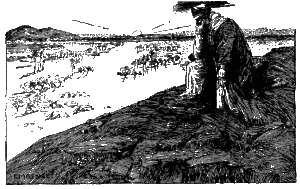
How was the world oriented north? We take it for granted that north is up because you place the more important things on top. But does this mean that people in the South must feel forever inferior? To counter this psychological disadvantage, it is important to understand the historical processes that led to this arrangement.
The most obvious point of reference is the map. Who decided that North was up? It seems that the vertical orientation of the world map was developed during the Italian renaissance, accompanying the great voyages of discovery by Columbus and co. Before that, the Arab maps were oriented upside down to us, with the south up. So as the practice of map-mapping passed from Eastern to Western empires, was it informed by a particular north-orientation in the Judeo-Christian tradition?
We are now on the verge of the great Jewish ritual of Passover, which commemorates the escape of the Jews from Egypt to find the promised land of Israel. In the Bible, the relationship between Egypt and Israel is vertical. In Genesis, Abraham goes ‘down into Egypt’ to escape famine (10). Later Joseph is brought ‘down to Egypt’, followed by his brothers (39). And the Exodus (32), Moses is described as the man that brought the Jews up out of the land of Egypt.
At the Passover feast, those gathered for the Passover feast read from the Haggadah, which includes the Afro-America spiritual Go Down Moses, expressing the hope among slaves that they would find a Moses to release them from bondage. William Faulkner’s story of the same name clearly identifies Pharaoh as the white slave master.
Up and down feature elsewhere in the Bible, but not along the north-south axis. The Book of Ezra tells the story of the Persian king Cyrus who invaded Babylon and released the Jews from bondage. Though himself a Zoroastrian, Cyrus had a great respect for other religions and won the allegiance of Babylonians by praying at the temple of Marduk. He also vowed to help the Jews re-established their great temple in Jerusalem. Cyrus proclaimed, ‘Anyone of his people among you—may his God be with him, and let him go up to Jerusalem in Judah and build the temple of the LORD.’ Though the trajectory from Iran-Iraq-Israel is along the east-west axis, it is still a matter of going ‘up’ to Jerusalem.
The particular Jewish arrangement of cardinal points seems quite independent of this vertical axis. The most important direction is Kedem, or east, towards which everything of importance is directed. They share with the Arabs an understanding of North as left and South as right.
The Hebrew word for ‘go up’ is aliyah. At one level, it describes the process of migrating to Israel, from the exiles of ancient Babylon to the more recent diaspora from Russia. At a more immediate level, it also describes when someone is called in the Synagogue to come up to the front and read from the Torah.
The opposite of aliyah is yerida, to go down. This is clearly a less desirable direction. There is even today argument about whether Abraham sinned when he committed yerida in going down to Egypt. One interesting paradox is yerida l’tzorich aliya (go down in order to come up), as evident in the folk wisdom about the necessity of hard times to acquire knowledge of the world.
So, the vertical root that surfaces in the Renaissance seems to strike deep in the Judeo-Christian tradition. But where does it begin? It becomes more difficult to find sources, but there’s an interesting resonance in the culture of Babylon itself. The creation epic known as Enûma Eliš is one of the first references to a sacred domain above. It pictures the beginning of the world… ‘When in the height heaven was not named,/And the earth beneath did not yet bear a name…’
And where did the Babylonians acquire their verticalism from? Where do we stop?
From the Judeo-Christian roots, we have a better understanding of why it is important whatever is given the elevated position. But it still does not explain how this privilege was granted to the North. We may have to go back to the Renaissance for that answer.
Thanks for Bernard Rechter and Paul Forgasz for their assistance with this issue.